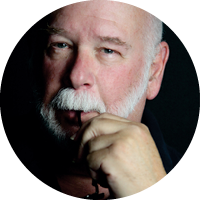



About

COLUMN
10.
BY THE NUMBERS
Stats on Key External and Internal Industry Trends

11.
THE PINACLE EXPERIENCE 2024
Elevating Marketing Leadership to the Next Level

12.
ACKNOWLEDGEMENT: CHAPTER PRESIDENTS
Inspiring Professionals, Driving Excellence: Our Chapter Presidents at the Helm

13.
ACKNOWLEDGEMENT: LEADERSHIP
Honoring Volunteerism: Celebrating the Leaders Who Drive SMPS Forward

14.
SMPS CONNECTIONS
Building a Career in A/E/C Runs in the Family

Create value for your company one step at a time.
Reading Jen McGovern's article, "From Good to Great," in the last issue of the Marketer, got me thinking about my almost 50-year professional career in the A/E/C industries and how my path evolved by seeking out and acting on opportunities to bring value to the teams I worked with.
I want to share some insights with those who may be starting out or looking for ways to advance in their careers. Fortunately, I always worked for people who would allow me to try any new task I could think of if I could demonstrate that it would benefit the company. If the new task worked well and produced a measurable benefit, the task became part of my job description. As my job description grew, I reached a point where I was allowed to hire a junior person whose job description would include all the lower-level tasks I no longer had time to complete.

1. Reflect
As you look to take your career to the next level, first list all your current skills, whether you use them in your present position or not. On that list, indicate whether each skill is one you want to hone or not. Then, check out the positions your firm is looking to fill. See how those positions match up to your list. There could be an opportunity to expand into a new role. Consider talking with your Human Resources folks if you are comfortable doing that.
If you find no in-house positions that seem to be a good fit, you may look elsewhere in the A/E/C industries, where you already have some knowledge and experience and maybe even some name recognition.
As you search various job openings, list all the potential job titles that you think could use some combination of your present skills and knowledge. For each potential job title you identify, list your current skills/knowledge that apply and the skills/knowledge you would need to acquire to move into that job description.
2. Pitch
Look at the skills/knowledge you need to acquire to put that "dream" job within reach. Can you acquire the skills/knowledge in your current position, or must you look outside? Either way, build a list of reasons why it would make business sense for your supervisor to approve the time and financial costs of you acquiring the additional skills/knowledge you have identified. Make sure that list includes the benefits to your department and your firm (a return on their investment). Get your supervisor’s approval on new tasks and agree on the metrics by which your success will be judged.
3. Act
Pick one of the new tasks where your new skills/knowledge will allow you to succeed.
Start doing the new task. Succeed. Make sure your supervisor believes that you have succeeded based on the agreed-upon metrics and any anecdotal information he/she has heard from colleagues.
Repeat until you have significantly expanded your skills/knowledge that are more relevant to the position you are pursuing.
4. Repeat
You are now ready to pick other tasks to add to your job description, using your new skills and experience, and the same repetitive process of "reflect, pitch, act." When your job description grows to the point where there are not enough hours in a workday to get it all done, it is time to pitch your supervisor on adding a junior-level person, with their job description being those lower-responsibility items you have outgrown.
As appropriate to the growth of your job description and position, you can raise the issues of job title and salary/benefits adjustment.
I was striving for a future move to a designated marketing
position. I focused on displaying my knowledge of my present A/E/C position, my experience in relevant previous industries, and my ability to write.”
One night, while working on a proposal for a port expansion, I was given text about an industrial facility located within the port. The knowledge I brought from previous employment included information on that industry. I saw room for improvement in the write-up. Given my prior knowledge, I revised the text to polish the writing and include pertinent information. When I put the draft in the "Out" basket, I attached a note asking the PM to look at what I wrote and compare it to the original write-up. He approved my text and spread the word that I could help the firm's proposal efforts with more than just typing. And that was my start in creating a writing and marketing leadership position.
That's my story. Here are two more perspectives for you.
Jeffrey Taub, FSMPS, CPSM, Senior Vice President at AKRF, offered this example of creating the job description you want when moving to a new company.
In 2017, I decided to leave my job as a marketing manager in a large firm—where everything took a back seat to proposals—and join a smaller company where I could focus on marketing strategy and creativity and where I would be valued for my influential voice, accumulated knowledge, and strategic insights.
My new role involved business development strategy, brand visibility, and corporate communications, tapping into my A/E/C industry experience and ability to “connect the dots” across the firm's services and sectors. During a breakfast interview, brainstorming potential roles with the CEO, I suggested that a position free from the distraction of "managing people or proposals" would be a good starting point. Based on my previous experience, I knew that a fully staffed and capable proposal team had to be in place before the firm could focus on more strategic aspects of marketing and business development. That left me as a one-man "department" for several years before I hired anyone to support or supplement my new responsibilities.
Jeffrey offered this example of expanding his job description while staying at the same company.
Fast forward a few years. After successfully pitching my "new" firm's leaders on a comprehensive corporate rebrand in 2022, I positioned myself to chair the ad hoc committee and lead the work. I knew that leading a rebrand would be a career-defining project for me. It required that I sharpen my full complement of project management skills—organizing, communicating, budgeting, scheduling, and coordinating with our branding consultant—without compromising my voice as the only marketer on the rebrand committee and someone who needed to be part of the team, not just managing its work.
With the CEO on board, I made a successful presentation to the Board of Directors, anticipating and addressing the four main questions about the rebrand: Why us? Why now? Who will lead? What will it cost? After nearly two years of surveys, interviews, research, analysis, workshops, writing, and design with our consultant, the rebrand was publicly launched in September 2024, resulting in additional visibility roles for several marketers and a new visibility-focused role for a prior proposal coordinator.
Jen McGovern, CPSM, Regional Capture Manager at VHB, offered this example of changing her job description and ultimately moving to a new company.
In a previous postion, I was looking to expand my primary role beyond coordinating proposals. I volunteered to be the "peer reviewer" whenever a teammate needed a proposal review—with a team of 15 people, this was frequent. I ultimately proposed becoming the team's "Staff Editor"—a new role that would serve as the main reviewer of all marketing materials as well as working on billable projects. I made a formal pitch for the position to the team lead and the marketing manager. I prepared a written proposal outlining the benefits of the position, my proposed approach to the position, and how it would integrate into team workflows. I was willing to invest my time in what I saw as my opportunity for advancement. I was allowed to do a 90-day trial of the position while maintaining my role as a proposal coordinator. The trial was successful.
Ultimately, leadership was split on whether the position was necessary. I wound up taking this experience to a marketing manager position at another company. Lesson learned: Make sure your stakeholders—in this case, the team leader and the marketing manager—see the value in the skills that you're offering.
Conclusion
Remember that if you want to move up, you must look for skills, knowledge, and tasks that will be of direct benefit to your department and your firm. If your desired move is lateral, the new skills, knowledge, and tasks must still benefit your firm. In neither instance can efforts be just for your own personal professional development.
If you are pursuing a position at another company, also remember that you might be able to "tweak" the position a little (or maybe a lot!) during your interviews so the job is closer to your "dream" job the day your employment begins.
Currently retired, Bernie Siben, CPSM, spent 20+ years in a variety of marketing roles with A/E/C firms and then another 20+ years as an independent strategic and marketing consultant to our industry. He has written extensively for a number of SMPS and other A/E/C/ industry publications, including his own blog, which included 200+ posts. He can be reached at 559.901.9596 or at bernie.siben.cpsm@gmail.com.
Connect with Bernie on










